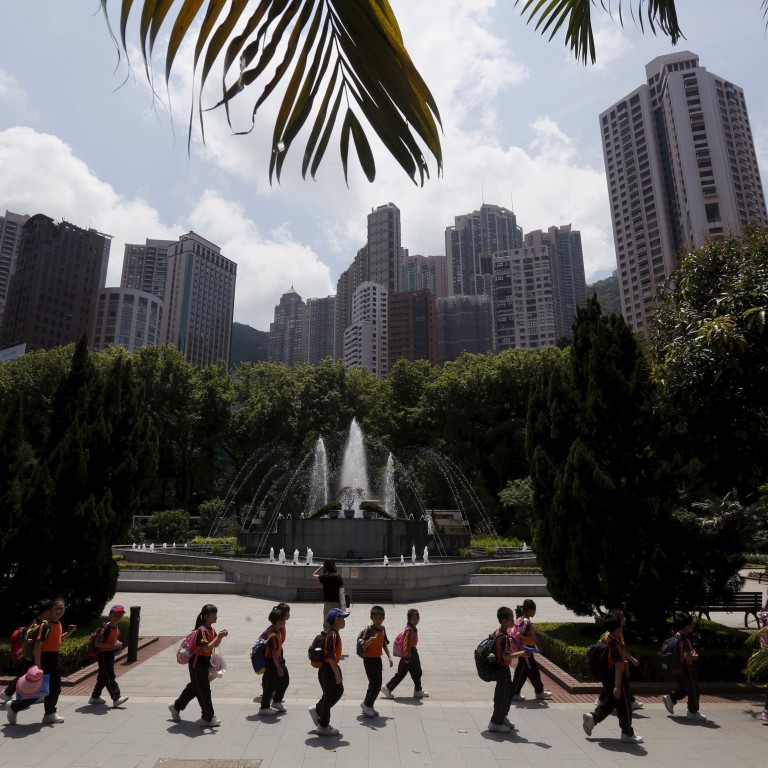
Disastrous rent control laws and building codes in Hong Kong
In 1969, my classmate’s family moved into the Man Cheong Building in the Jordan area. If you drive by the area, you can still see it – it is part of the “saw-tooth” skyline of four buildings facing the western reclamation site.
A 1979 study by Professor Steven Cheung on rent control and housing reconstruction in Hong Kong touched on the fascinating economic story behind these buildings and my essay here draws heavily on his work.
These buildings reflect the disastrous historical effects of rent control legislation and building codes on development.
The problem started in 19th century London, where one of the controlling factors for regulating the height of buildings was the light-angle. This was motivated by a concern that the lack of sunlight at street level contributed to unsanitary conditions.
The English Public Health Act of 1875 regulated the situation by aiming for a maximum diagonal of 45 degrees between the building line (at ground level) on one side of a new street and the skyline formed by eaves on the other side.
The idea was extended to Hong Kong in 1903 when, after a series of epidemic outbreaks, the Building Ordinance was enacted. Its contents were imported from London – regardless of the fact that a more vertical angle for sunlight was possible in sub-tropical latitudes.
If this had been taken into account, it would have allowed buildings to be taller and thus to accommodate more people. But here and elsewhere in the British empire, such as Calcutta and Singapore, this was not to be the case.
The situation came to a head after the war, when buildings had an average height of only 3.6 stories. Hong Kong’s population surged from 600,000 to 2.3 million, pushing up demand for homes and rents. The government decided to introduce rent controls but these made it difficult to evict tenants and almost impossible to redevelop properties.
In 1955, the situation was altered radically with a new ordinance permitting considerably higher structures to be built. Building heights rose to an average 9.39 stories for buildings constructed in the period 1960-62.
These changes were in direct conflict with the objectives of rent control. , After a landmark court case in 1954, the Tenancy Tribunal was given the power to set compensation and thereby eminent domain in reconstruction proposals, but it fixed a low rate of compensation. As a result, redevelopment occurred at a breakneck pace.
The situation was aggravated by an ad hoc plot-ratio amendment in 1962 to reduce the amount of redeveloped land space, which had an odd loophole: building works designed to the old regulations could be approved up to 1 January 1966.
A disastrous building rush swept Hong Kong between 1962 and 1965. This was when landlords introduced the practice of “set-back”, whereby they could increase floor space if the top stories were set back in steps that observed the required light-angle (by then it was 76 degrees from street center). They added as many as 3 to 7 “extra” stories depending on the building site.
However, this housing boom collapsed in 1964 following runs on banks, and stayed that way until late 1969. I suspect the rush of construction ahead of the 1966 deadline might have triggered the bank runs and economic recession, and perhaps even contributed to the 1967 riots as the living conditions of people evicted from their homes worsened.
Such has been the disastrous, unintended consequences of legislation and regulation. The Jordan buildings will likely stand for some time. If you pass by them, you will notice one side of one building is not “set-back”. It faces south on Man Cheong Street, at the corner of a major road junction with more open space, so it has a higher light-angle limit. As a student, I wondered why there was this asymmetry and even imagined there was some profound fung-shui reason.
Richard Wong Yue-chim is Philip Wong Kennedy Wong Professor in Political Economy at the University of Hong Kong

